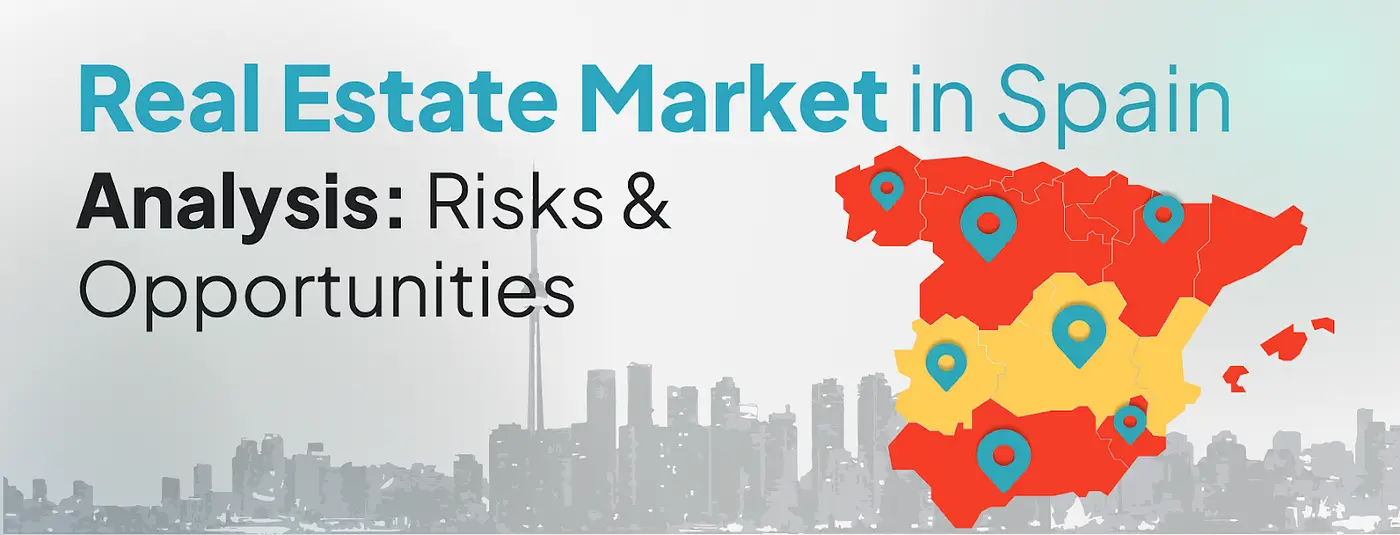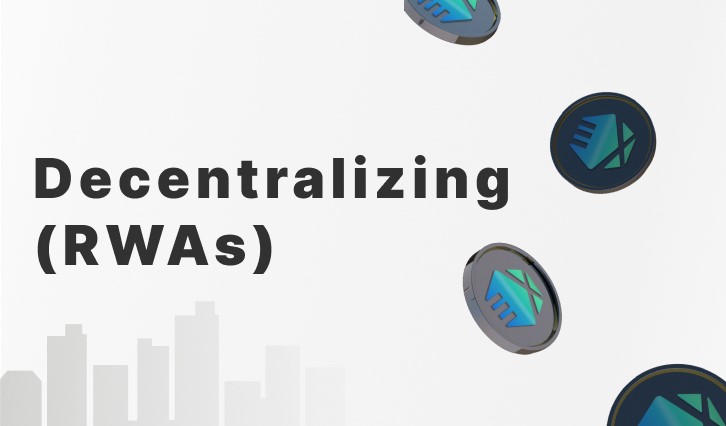1. Executive Summary
Tokenization — the representation of asset ownership rights as digital tokens on distributed ledger technology (DLT) — is on the verge of fundamentally reshaping capital markets. Its projected growth is driven by efficiency gains, enhanced liquidity, and increased accessibility.
This report offers a strategic analysis of the tokenization landscape, with a special focus on real estate — an industry ripe for disruption due to historically high transaction costs, illiquidity, and complex legal frameworks. In addition to well-known benefits, we delve into emerging trends, new market data, and regulatory shifts such as MiCA in the EU and evolving regulations in the US.
Key Takeaways
-
- $16 Trillion Potential: BCG and ADDX estimate the tokenized asset market could reach $16 trillion by 2030.
-
- $1.5 Billion: The current value of the tokenized Real-World Asset (RWA) market.
-
- 430 Million Addresses: The approximate number of public blockchain addresses worldwide, demonstrating growing adoption.
-
- $280.6 Million: Estimated size of the tokenized real estate market, indicating significant runway for growth.
2. The Tokenization Imperative: Beyond the Hype
Tokenization is more than a technology shift. It offers a new paradigm in how assets are owned, managed, and traded.
-
- The Network Effect Multiplier
-
- As more assets and participants join, the ecosystem’s value grows exponentially.
-
- Greater network participation can reduce frictional costs and boost liquidity, in contrast to traditional markets where increased participation can sometimes complicate trading.
2. Beyond Fractionalization: The Rise of “Composability”
-
- Tokenization supports “composability,” enabling assets and financial instruments to be combined in novel ways.
-
- Example: A tokenized real estate property + tokenized insurance policy + a tokenized derivative contract can create a dynamically managed investment portfolio.
3. Data-Driven Insights
-
- BCG & ADDX: Project $16 trillion in tokenized assets by 2030.
-
- RWA Market: Valued at ~$1.5 billion; real estate represents $280.6 million of that market.
-
- Blockchain Addresses: Over 430 million globally, reinforcing a rapidly expanding user base.
Forecasted market size of real-world asset tokenization in several industries, including real estate, from 2023 to 2030 (in trillion U.S. dollars)
3. Real Estate: The Epicenter of Tokenization Disruption
Real estate is especially poised for tokenization-driven transformation due to historically illiquid markets, high transaction costs, and complex legal frameworks.
-
- The “Illiquidity Premium” Erosion
-
- Traditionally, real estate has an “illiquidity premium,” reflecting higher required returns.
-
- Tokenization enables secondary market trading, reducing this premium. A key indicator: Watch for the convergence of valuations between tokenized and non-tokenized assets.
2. Beyond Primary Markets: The Secondary Market Catalyst
-
- The real unlock happens when 24/7 secondary markets emerge, with robust price discovery and investor confidence.
-
- Indicators of Success: Order book depth, low bid-ask spreads, and reliable liquidity providers.
3. Tokenized REITs: A Potentially Superior Structure?
-
- Automated Dividend Distribution via smart contracts.
-
- Global Investor Base bypasses traditional geographic limitations.
-
- Enhanced Transparency: Real-time data on portfolio performance.
-
- Reduced Fees through automation and fewer intermediaries.
4. Institutional-Grade Infrastructure
-
- Platforms must meet custody, compliance, and reporting standards demanded by institutional investors.
5. Tokenized SPVs and Bond Structures
-
- SPV Issuance: An SPV holds the property and issues tokenized bonds, offering:
-
- Bankruptcy remoteness
-
- Familiar bond frameworks
-
- Potential credit ratings
-
- Example: A $100 million commercial property: The SPV issues $80 million in tokenized bonds, backed by the asset.
6. Quantifying the Security Premium
-
- Track the yield spreads between traditional real estate bonds and tokenized equivalents.
-
- Target Metric: Basis point differences in yields for comparable offerings.
4. Regulatory Labyrinth and the Path to Institutional Acceptance
The global regulatory environment for tokenized assets is fragmented but evolving quickly.
-
- Jurisdictional Fragmentation
-
- Inconsistent rules hamper cross-border transactions.
2. Security vs. Utility Token Dilemma
-
- Classifications dictate compliance obligations.
3. AML/KYC Compliance in a Decentralized World
-
- Balancing blockchain’s pseudonymity with legal requirements.
4. Legal Opinions and Structuring
-
- Institutional investors demand clear, enforceable legal frameworks.
5. FSB’s “Same Activity, Same Risk, Same Regulation”
-
- Many regulators adopt this principle to guide new frameworks.
6. Regulatory Vanguard: MiCA (EU) and the Shifting US Landscape
-
- MiCA introduces a comprehensive framework in Europe, potentially recognizing tokenized real estate on official registries.
-
- US approach remains cautious and state-driven, though interest in Real World Assets (RWAs) is on the rise.
-
- Ondo Finance & others are paving new regulatory pathways.
7. The Importance of a “Regulatory-First” Approach
-
- Compliance should be built into tokenization models from day one.
5. Key Challenges and Mitigation Strategies
-
- Scalability Bottlenecks
-
- Ensuring underlying blockchains can handle institutional-scale transaction volumes.
2. Interoperability Hurdles
-
- Multichain ecosystems must support seamless movement of tokenized assets.
3. Cybersecurity Risks
-
- Deploy best-in-class audits, bug bounties, and multi-signature security for smart contracts and custody.
4. Valuation Methodologies
-
- Standardized, widely accepted approaches are crucial for investor confidence.
5. Custody Solutions
-
- Institutions demand insured, regulatory-compliant custody with robust governance.
6. Liquidity Provision
-
- Market makers and transparent order books are key to genuine secondary market liquidity.
-
- Data Point: Average daily trading volume and bid-ask spreads on tokenized real estate platforms.
7. Tax Implications
-
- Tokenized bond structures can alter real estate’s tax treatment, potentially improving efficiency.
6. The Future: A Tokenized Reality
-
- Institutional Dominance
-
- Large-scale adoption will come from pension funds, REITs, insurance companies, and other institutional players.
2. Hybrid Models
-
- Traditional institutions + DeFi protocols = bridging old and new financial systems.
3. Data-Driven Decision Making
-
- Real-time analytics for assets, liquidity, and collateralization will be a competitive edge.
4. DeFi’s Growing Role
-
- Expect collateralization of tokenized real estate in decentralized lending protocols.
5. Tokenization of Infrastructure & Development
-
- Not just existing assets — development projects and public infrastructure might see innovative financing via tokenization.
7. Untapped Potential: Beyond Treasuries, into Real Estate’s Long Tail
-
- The Treasury Tokenization Head Start
-
- Governments and institutions are testing tokenization with treasury bonds for enhanced efficiency.
2. Market Size Comparison
-
- Global Real Estate: ~$380 trillion market value.
-
- Tokenized Treasury Market: <$1 billion (current).
-
- Tokenized Real Estate Market: ~$280 billion (total, including various partial or private tokenization initiatives).
3. Real Estate: The Sleeping Giant
-
- From Commercial to Residential to Infrastructure, all segments can benefit from tokenization.
4. Tokenizing Investment Strategies: The “Narrative” Play
-
- Thematic tokens like “Sustainable Urban Development” or “Distressed Asset Opportunity” can attract specialized investors.
5. Democratizing Development
-
- Global fundraising from individual investors for real estate projects via security tokens.
Global map indicating major hubs of real estate tokenization & strong regulatory frameworks
8. Conclusion and Strategic Recommendations
Real estate tokenization is not a question of “if” but “when and how.”
The early success of treasury bond tokenization has demonstrated the technology’s viability. Real estate is the next frontier — a multi-trillion-dollar market with built-in inefficiencies that tokenization can address.
Strategic Recommendations
-
- Invest in Education and Expertise
-
- Stay updated on blockchain, smart contracts, and regulatory changes.
2. Monitor Regulatory Developments
-
- Pay close attention to MiCA deadlines and US regulatory shifts, as clarity can quickly alter market dynamics.
3. Pursue Strategic Partnerships
-
- Collaborate with established technology providers, securities lawyers, and financial institutions to navigate complexities.
4. Focus on Institutional-Grade Solutions
-
- Robust compliance, custody, and risk management are non-negotiable for institutional investors.
5. Leverage Transparency & Data
-
- Real-time reporting and analytics can help differentiate offerings and build investor trust.
6. Prioritize Security and Compliance
-
- Regular audits, multi-layer security, and clarity on investor protections.
7. Track Key Metrics
-
- Yield spreads, tokenized real estate AUM, daily trading volumes, and number of MiCA-compliant projects.
Bottom Line
Tokenization offers unprecedented efficiency, liquidity, and global access. Successfully navigating regulatory, technological, and market challenges will determine the pace of adoption. The prize — a transformed, more liquid, and more inclusive real estate market — is too substantial to ignore.



